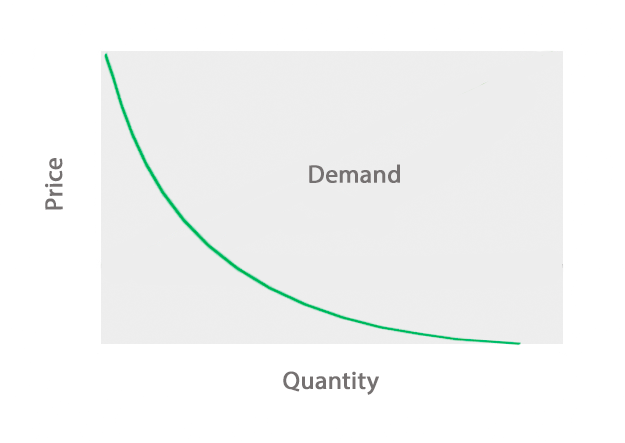Have you ever imagined allocating tons of resources just for your product to end up having no traction and zero adoption rate? This can happen because of the lack of market demand — when there are little to no users interested in using your product.

Without market demand, your product might struggle to gain momentum, achieve growth, and generate revenue. A struggling product means you spent resources and gained no return on investment (ROI). Thus, it is crucial to study and have market demand before building a product.
The definition of market demand differs between physical, tangible, and software/digital products. In general, it’s the overall quantity of a service or a product that customers are able to purchase in a particular market and at X price. It measures the demands of the product considering different factors such as customer problems, customer preferences, consumer buying power, consumer purchase power, market trends, and pricing.
Market demand is both a metric and research element. It is primarily collected through market research and is measured in the product analysis stage. Market demand has a significant role in determining the resources allocated to product development, pricing schemes, and the overall strategic course of the product.
Market demand for digital products, where the majority of product managers work, is the total number of users that want to buy or subscribe to your product within a given window of time and in a specific market.
The market demand for digital products is based on multiple factors, such as user pain points, product user experience, number of features, and ease of use. To create and develop digital products that really satisfy user expectations and needs, product teams must first understand the market and determine the demand for those products.
In the product life cycle, market demand analysis typically happens when the company and the product team are introducing a new prominent feature or product vertical.
Depending on the company’s resource threshold, significant initiatives are features that require 3–4 months (or longer) of development.
Before committing to building such products and spending resources on pursuing them, the product manager will need to do a lot of analysis, and one of the key research points is market demand analysis.
Before we look into the top factors of market demand and the technique to forecast and find it, it is crucial to understand the market demand curve. This concept is mainly used when working on product pricing with your team.
The market demand curve is a graphical representation that demonstrates the correlation between the price of a product and its demand for it. The price is shown on the y-axis while the demand is shown on the x-axis.
A typical market demand curve has a downward slope, indicating that as the price of a product increases, the quantity demanded decreases and vice versa. This derives from the law of demand, which states that as the price of a good or service increases, the quantity demanded by consumers decreases, and as the price decreases, the quantity demanded increases:

There are many factors that influence market demand. Some of them are on the company level (e.g., the brand) and others are on the product level (e.g, user experience).
Below are the top factors that influence the market demand for digital products:
Customers look for products that offer features that solve their core problems. Products with relevant features for users are likely to be in higher demand.
Competition within the market can impact demand. Products that solve more core problems and offer more feature options than the other competitors tend to have more market demand.
The experience your users have when using your digital product is crucial. Products that offer a seamless and enjoyable user experience are likely to be more popular. This is especially important in that if users have a bad experience, word of mouth will travel and other people may not be motivated to try your product at all.
Users are likely to choose products that are priced competitively and to what they believe gives them value. So take time to understand the willingness to pay (WTP) and to come up with a solid pricing strategy.
Brands with a wide presence that are well-known and trusted are likely to have a higher demand for their products. Thus, companies should invest in branding the same way they do with their products.
Again, market demand is a qualitative metric and an ongoing process. There are tons of frameworks out there that can help product managers and executives identify the market demand for their products.
Below are sample steps to follow to help you determine market demand:
Identifying and understanding your target users is the very first step in determining market demand for the product. Scoping and launching some qualitative research initiatives to understand the target users’ demographics, psychographics, and behavior will serve you best when you look for the market demand.
The product team should consider demographic factors like age, gender, income, education, interests, environmental context, and lifestyle, documenting them in user personas for better future decisions.
The research outcome will help the product team identify and understand the target users’ main problems and pain points, what products they are looking for, and what features and solutions they want.
Market research can help you gain insights into overall market conditions, gaps, and your competitors’ way of dealing with the market. Through techniques like surveys, focus groups, market interviews, and competitor analysis, you and your product team will be able to understand the prevailing market conditions.
Surveys can be conducted online or in person and can help you gather data about your target users’ pain points, preferences and behavior. Focus groups can provide more in-depth insights into your users’ needs by allowing them to state and model their experiences. User interviews can act like a feedback channel where you will be able to pick some users and follow up on the insights gathered from them.
Finally, competitor analysis can help you identify the strengths and weaknesses of your competitors, observe how they solved similar problems, and understand the market landscape.
Keeping up with industry trends is essential to staying ahead of your competitors and understanding users’ changing problems and needs. Following industry publications, attending industry events, and networking with other subject matter experts and professionals can help you come up with innovative features and solve problems before other competitors.
In general, this will help you generate more market demand for your product and even open room for new markets to emerge. Keeping an eye out for changes in technology, user behavior, and emerging markets can be highly beneficial.
Launching a small-scale test of your product (aka an MVP) can help you gauge interest and demand without rigorously spending resources on building the end-to-end experience. This can include offering a free trial or beta test to a selected group of users or launching a small set of features to test their performance before completing the bigger picture.
This will allow you to gather feedback and data to make informed decisions about different aspects of the product, like the pricing and the priority of some features.
One way of finding market demand is by collaborating cross-functionally with the marketing department to build a brand, create awareness, and have a direct connection with users.
Through social media strategies like ads and optimizations, you can build a landing page and, with some test techniques, like fake door tests, you can attract potential users and collect data about their preferences.
Another great tool for gauging interest in B2C products with a big user base is the pulse check technique on social media. Pulse check is basically tracking success after launching a small subset of the feature to the market.
Typically, the pulse checks are paired with social listening to see top comments, feedback, and suggestions people post about on social media. Once solid evidence is found, the product team can proceed with building the other versions of the initiative.
Successful products require two things: users who want what your product offers and users who are willing to pay for it. In essence, that’s market demand.
Market demand, especially for tech products, is influenced by multiple factors such as user experience, pricing, and brand recognition. To forecast and determine the market demand, there are multiple techniques you can utilize. Some of those techniques are testing on a small scale and running some systematic surveys around the problem and solution space.
Market demand is one of the most essential components that need to be analyzed before pursuing and building big products or features.
Featured image source: IconScout

LogRocket identifies friction points in the user experience so you can make informed decisions about product and design changes that must happen to hit your goals.
With LogRocket, you can understand the scope of the issues affecting your product and prioritize the changes that need to be made. LogRocket simplifies workflows by allowing Engineering, Product, UX, and Design teams to work from the same data as you, eliminating any confusion about what needs to be done.
Get your teams on the same page — try LogRocket today.

Most teams fail at autonomy. Learn how clear rules help product teams move faster without micromanagement.

A practical framework for PMs to use AI in ideation without sacrificing judgment, strategy, or decision quality.

A practical five minute revenue estimation method to help product managers compare ideas, drop low impact features, and prioritize smarter.

A practical guide for PMs who want to stop being bottlenecks, delegate smarter, and lead teams effectively with a clear ownership framework.